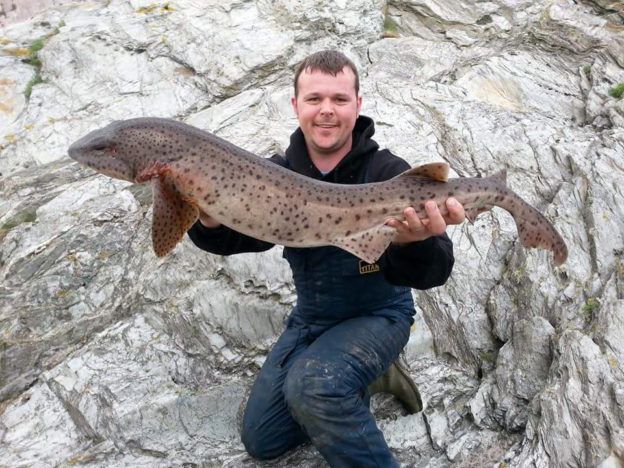
Read the article with FishingTheSpot: the bull huss
Keep an eye on this subject!
Thousands of species spotlights and techniques but also all the local information about your city!



Meet other anglers near you and share your fishing fishing trips, afoot or on a boat, at sea or in freshwater
See the fishing tripsThe Bull Huss

All year
58 cm
Did you fish
this species this month?
The Bull Huss belongs to the Scyliorhinidae family. Small in size, they usually measure 60 to 80 cm, although there are larger ones, since they can reach 1.5 m in the Mediterranean and 2 m in the Atlantic. This fish can live for 75 years. It spawns a hundred eggs all year round, especially in the late winter and in July. It is abundant every day of the year. This fish is not really active but still is hard to catch.
The upper part of the Bull Huss is light brown in color, covered with small dark brown spots. Because of this pattern of spots, it is also called spotted cat shark. The part of the flank is white and grey. The mouth and nose holes are below his obtuse head. The particularity of the Bull Huss is that its nostrils are linked to the mouth by a curved line.
The Bull Huss Lifestyle
The Bull Huss do not live in troops, but they are solidary. They are mainly active at dusk or at night. The Bull Huss feeds on crustaceans (crabs, shrimps), mollusks, cephalopods (small octopuses, squid) and other fish.
It is an oviparous species that lays about a hundred eggs per year, all year round. The egg is contained in a horny capsule measuring about 12 cm long and 4 to 5 cm wide in the Atlantic (smaller in the Mediterranean), rectangular in shape with 4 long and thin flexible spiral extensions. Eggs are sometimes called "mermaid purse" because of their purse shape with twisted cords.
To lay eggs, the female circles around a support (gorgonian or algae type) so that the filaments twist around it. The young bull Huss, which measure about 16 cm and have a yolk vesicle, hatch after about 9 months. The incubation time is shorter when the water is warmer.
Sexual maturity is achieved for both sexes when individuals are about 80 cm tall.
The Bull Huss habitat
The Bull Huss is a benthic species, living on hard or rocky bottoms from the surface to more than 100 meters. During the day it hides under rocks or in a hollow and remains hidden until the night when it becomes active.
The Bull Huss is present throughout the Mediterranean (but absent from the Black Sea). It can be found in the Atlantic from the coasts of Morocco to the north of Scotland, in the English Channel and the North Sea to the south of Scandinavia.
The Bull Huss angling
The Bull Fish are caught either with longlines or straight nets; this is a directed fishery or with bottom trawls, but may not necessarily be sought.
It is abundant all year round so there is no fishing restriction.


